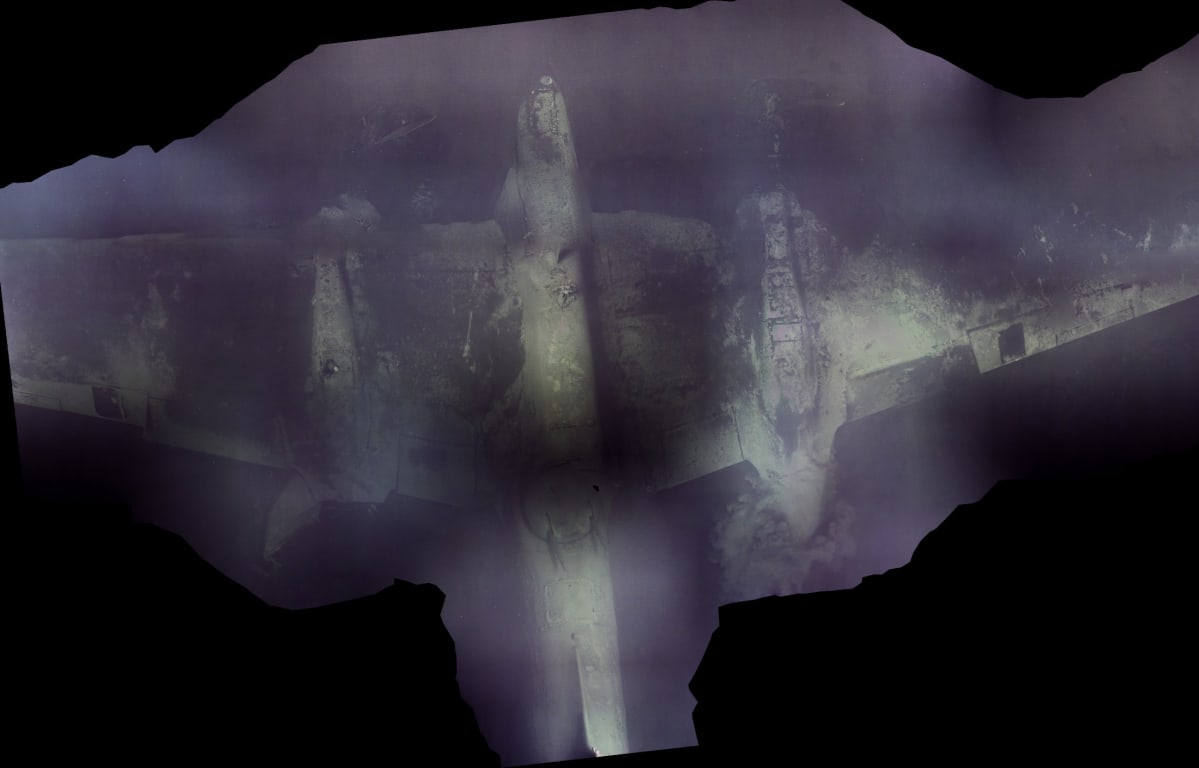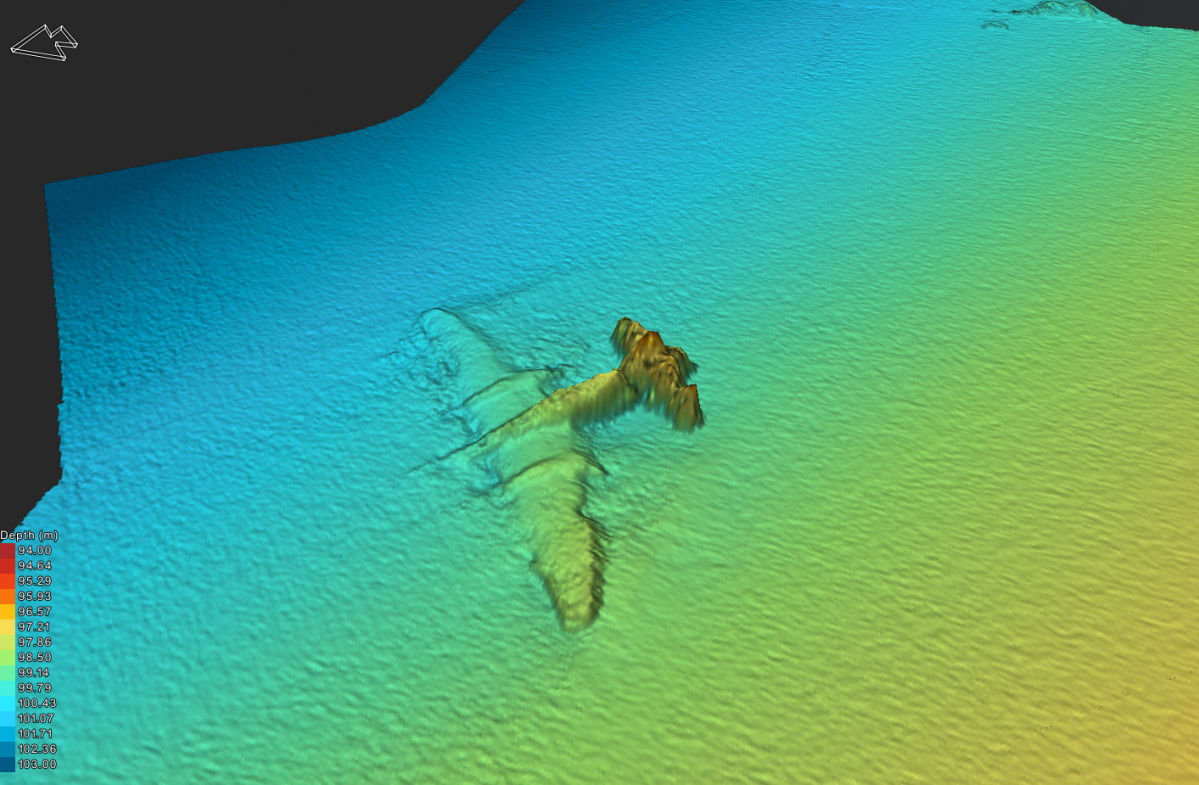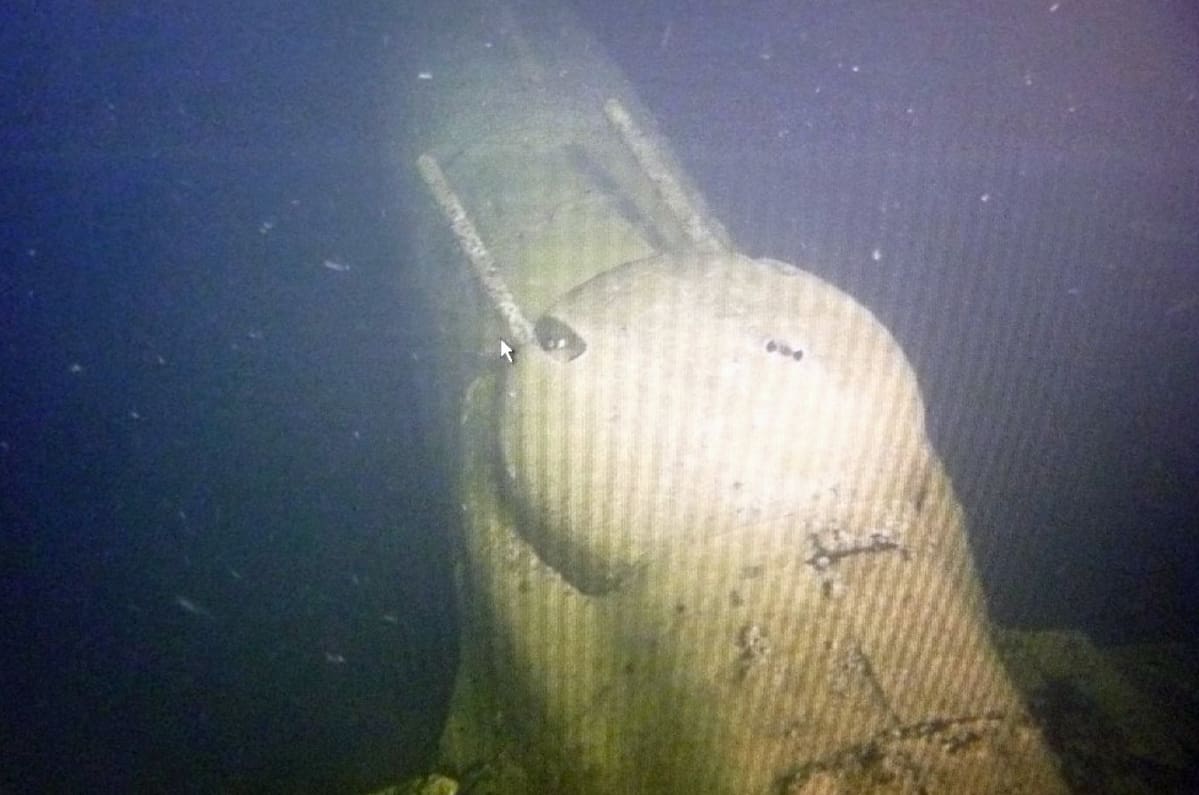


http://yle.fi/uutiset/3-9604845
/
https://translate.google.com/translate? ... edit-text=
An intact bomber was found at the bottom of the Gulf of Finland - "Very rare"
The wreck is located near the Baltic Sea gas pipeline in the western Gulf of Finland.
maritime Archeology
10.5.2017 at 18:38
What is it all about?
• The western Gulf of Finland has been found to be an exceptionally fit bomber wreck
• The plane is estimated to have fallen in World War II
• It lies approximately one mile from the Baltic Sea gas pipeline route
A prominent bomber wreck has been found in the proximity of the Baltic Sea gas pipeline running off to Finland. The machine is located about a hundred meters in the western Gulf of Finland.
- It was completely intact. The machine is about 11 meters long and has a wingspan of 18 meters, says Minna Sundelin, the stakeholder group manager at Nord Stream 2.
The marine archeologist has evaluated the wreckage.
This is the American Douglas DB-7 Boston / A-20 Havoc airplane with two engines.
The allies, including the Soviet Union, used these machines in World War II.
The wreck found last year is located about a mile from the Baltic Sea gas pipeline line.
- Far far away, it does not affect the route planning. We do not know if there are any ammo on the machine.
We take into account the findings within 250 meters of the pipeline, says Sundelin.
Details of the skies have been submitted to the National Board of Antiquities. The discovery of first told Svenska Yle (switch to another service) .
Generally scattered and small pieces
Vantaa aviation museum is estimated to have been left with a chance to survive the fallen plane.
When an aircraft dives from the sky to the ground or into the sea, it usually goes to pieces.
- The sinking of a sinking ship intact is more likely.
It is very rare that the airplane will survive the first contact with water and still travel all the way from it to the bottom,
"says marine archaeologist Matias Laitinen, aviation aviation scientist.
Keeping a sinking ship intact is more likely.
Matias Laitinen
According to Laitinen, divers find some of the parts of the Soviet-era bomber in the waterways, but their registry data are incomplete.
- In addition, machine wrecks are scattered and small pieces, so they can be difficult to detect and understand as part of the machine.
Bomber frame on the seabed
The bomber lies at a depth of 100 meters. Kuva: Nord Stream 2 AG
A merchant ship from the 18th century
The new gas pipeline route on Nord Stream is currently exploring the various environmental risks that may be caused by pipeline construction.
The company has photographed the seabed on the tube route and also found shipwrecks and other marine archaeological finds.
One of them is a wooden merchant ship in the eastern Gulf of Finland, estimated to date from the 18th century.
- The ship is fragmented and its nearest ice is about 220 meters from the pipeline route. During the construction work, we take care of the wreck, "says Minna Sundelin, Nord Stream's stakeholder manager.
In addition, the seabed has been found during the First and Second World War, thousands of mines, bombs and grenades. About fifty of them have to be cleansed from the pipe.
The biggest environmental burden comes from mines blasting. Wet troughs on the seabed will be cleared from the gas pipeline route during the line construction phase.
- Then animals must be expelled from the area. It's done with a voice that drives animals like seals off, "says Simon Bonell, vice president of Nord Stream 2 AG.
The planned gas pipeline also crosses with 24 cables to be protected with concrete.
Bomber wreck
Kuva: Nord Stream 2 AG
A total of 90,000 pipes are coated in Finland
Gas pipe components are coated in Germany and Finland. Work at the plating factory in Kotka started in March. Wasco Coatings Finland coats up to 90,000 tubes in Kotka's Mussalo harbor. The work will continue until the end of next year.
All in all, pipes are needed around 200,000.
If the project authorization procedure proceeds as planned, pipeline construction will begin next spring. The pipeline will initially be built from Russia via the Gulf of Finland to Germany.
The construction of a gas pipeline from the German route begins in winter 2019.






